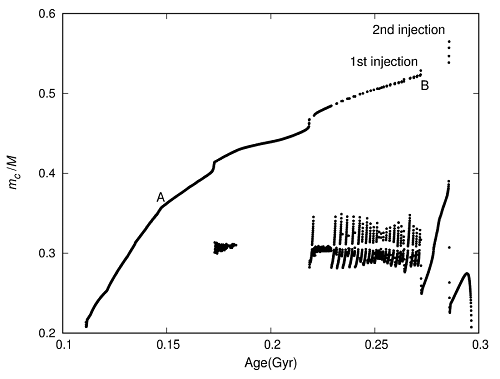The sdB stars are a group of special B type stars. Their masses are about a half of the solar mass, but their luminosities are tens of times of the solar luminosity, and their surface effective temperatures are about 4 to 8 times of the solar one.
In a recent study published in the Journal of Astrophysical Journal, LI Yan et al. of Yunnan Observatories, Chinese Academy of Sciences, revealed the development of the convective core of sdB stars during their central helium burning stage.
The sdB stars are in the late stage of evolution of some stars. The central helium burning process provides energy to keep them glowing, and the violent helium burning process can also drive convection and form an extended convective core in their interior. There have been debates for a long time on the development of such a convective core, as well as matter mixing near the edge of the convective core. Semiconvection mechanism with parameters has often been adopted to treat the mixing, while phenomenological self-driving mechanism of overshooting has also been widely applied, and the results are very different.
Based on the k-ω model of convection developed recently by themselves, Li et al. carried out simulation analysis of turbulent motions in the convective core of an sdB star, and found that the development of the convective core can be divided into three stages. In the initial stage, the mixing near the boundary of the convective core can be described by the overshooting mixing alone. In the middle stage, the convective core periodically splits into two separate convective regions, while the overshooting gradually merges the two convective regions into one convective core. In the final stage, the so called “breathing convection” happens, and the overshooting takes almost no effect on the convective core.
This research is co-sponsored by the National Natural Science Foundation of China, Key Laboratory for the Structure and Evolution of Celestial Objects of Chinese Academy of Sciences, Center for Astronomical Mega-Science of Chinese Academy of Sciences, and Yunnan Province of China.

This figure shows the evolution of the convective core of sdB star based on the k-omega model. The pointed line indicates the boundary of the convective core in the stellar interior. Image by LI Yan
Contact:
LI Yan, Yunnan Observatories, CAS
ly@ynao.ac.cn